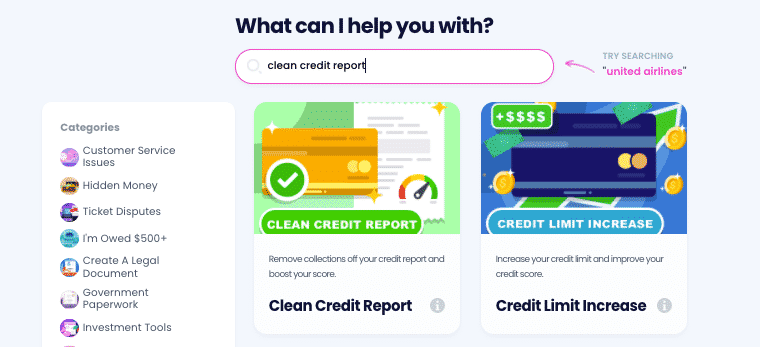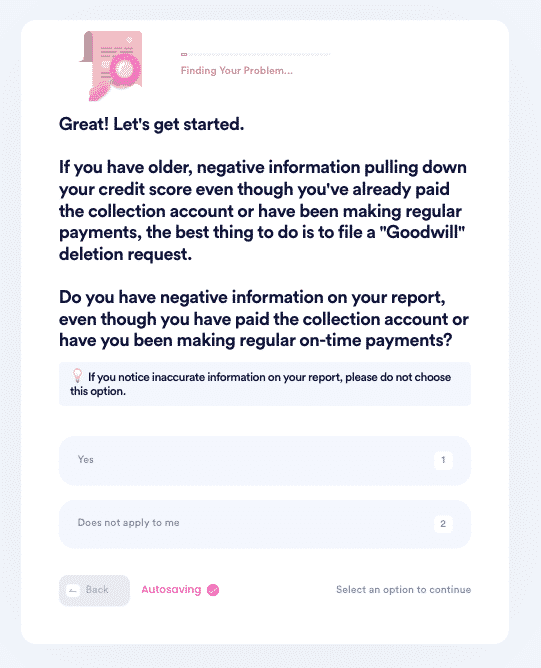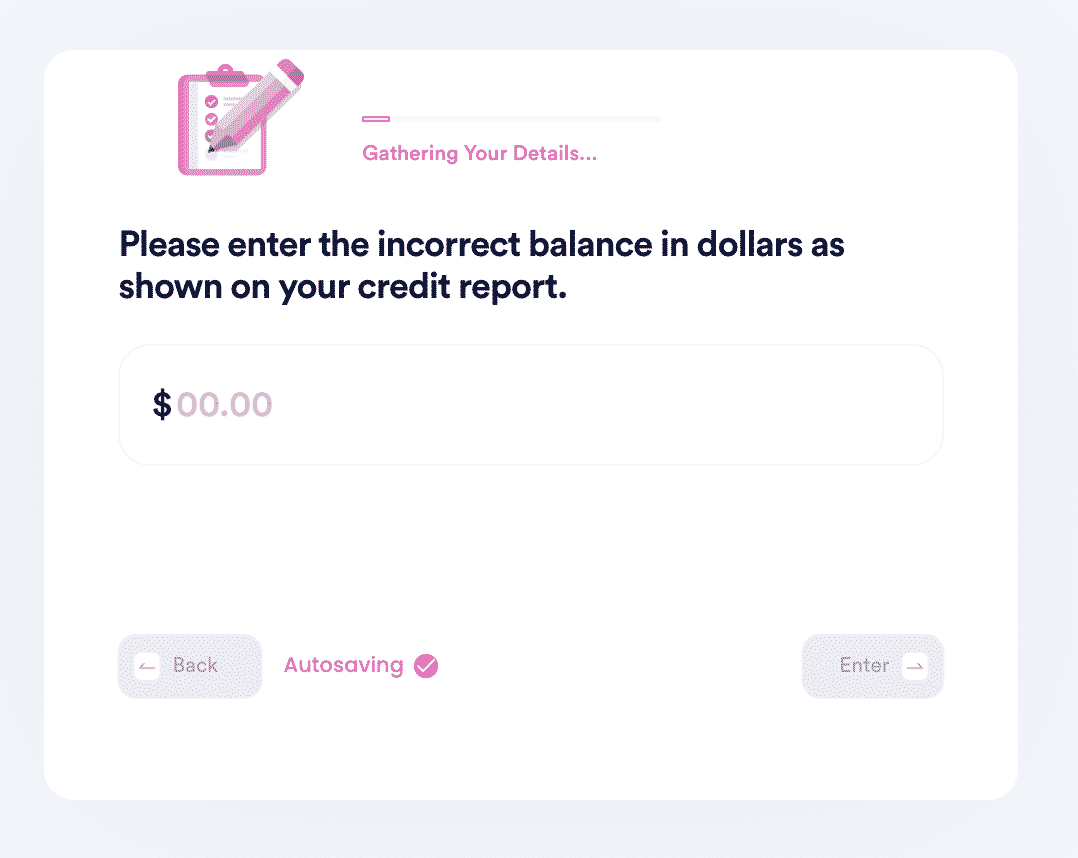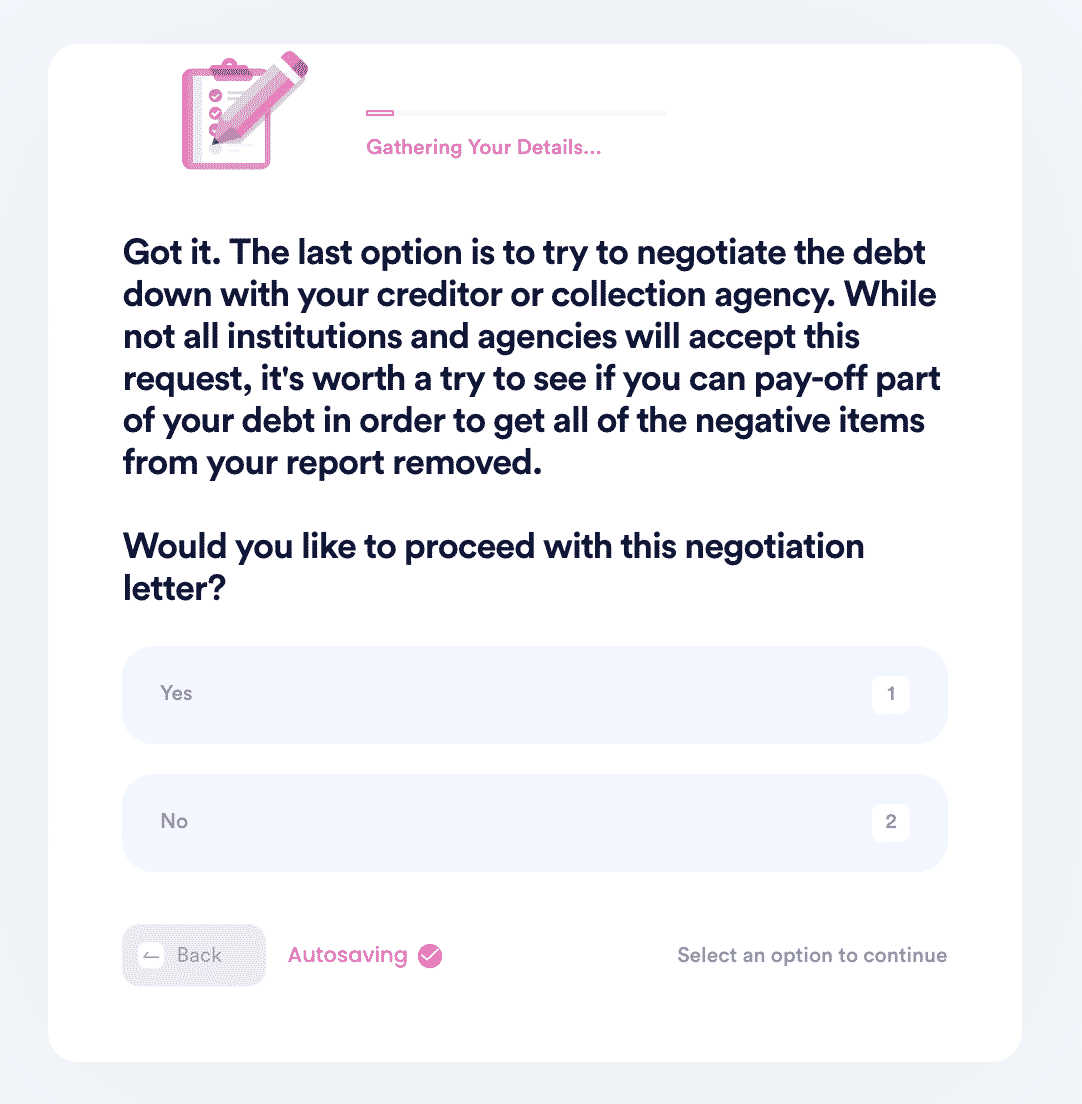Sample Paid In Full Debt Settlement Letter
It is a big achievement to settle a debt, especially if you are getting your financial affairs in order. However, some debt collectors will continue to contact you, even if the debt is paid in full. A for a paid in full debt sample can help you craft a professional letter you can send to the collection agencies notifying them of your debt's paid status.
It isn't easy to write a letter that will make the impact you want on a debt collection agency. That is why if you need to craft a letter for debt settlement, you can always use DoNotPay to help you out.
What Is a Debt Settlement Letter?
A is a letter that explains to any interested party, such as a credit bureau or debt collector, informing that party a debt has been settled and is no longer able to be collected. The debt settlement letter can either be for a debt that was settled for a percentage of the original amount, or it can be for a debt that has been paid in full, whether it was paid to a third-party collection agency or to the original debtor.
The intention of the letter is to get debt collectors to stop contacting you about the debt that you've paid. It can also be used to try and get a debt removed from your credit report, or if it can't be removed, it can at least be marked as paid or settled.
How to Write a Debt Settlement Letter
A debt settlement letter has a few specific elements which are important. See them in the table below.
| Your Information | At the top of the letter, you should always include your:
It is also important to add the date you wrote the letter in the top right corner of the page. |
| Receiver's Information | Next, you will put the information of the agency or institution that you are sending the letter to, including the name of the collector or agency and the address. |
| Name of Debt | Before the body of the letter, you should add the name of your specific debt and the account number or reference number associated with the debt you have paid. |
| Body of the Letter | The body of the letter is used to explain your situation. You will want to include information about the debt, how it was paid in full, and criteria in the original agreement that applies to paying the debt off.
This is also where you will be able to request what you want from this correspondence. You can request confirmation of the debt being paid in full or settled, request that no further contact be made, and request your account and personal information be removed from the debt collector's files. |
Once you have included all the necessary information, you can sign the letter and also make sure your name is printed below it.
How to Use a Debt Settlement Letter
Once you have written your debt settlement letter, it is important to send it to the right places. A debt settlement letter can be sent to a variety of financial institutions to let them know your debt has been paid in full. Some of the places it is common to send your debt settlement letter will include:
- Third-party debt collection agencies
- The original holder of the debt
- A credit bureau that does not have up-to-date information on a specific debt
- Banks and lending agencies
Remember to save copies of your debt settlement letters, and proof of mailing.
Get Help With Your Debt Settlement Letter from DoNotPay
If you have paid a debt, you want to let all interested parties know that this has happened. Not getting your paid debt acknowledged can lead to old debts still impacting your
- Credit report
- Credit score
DoNotPay can help out in just a few simple steps.
How to Clean Up Your Credit Report Using DoNotPay:
If you want to clean up your credit report but don't know where to start, DoNotPay has you covered in 3 easy steps:
- Search Clean Credit Report on DoNotPay.

- Prepare a recent copy of your credit report that you can use as a reference.

- Let us guide you through the 4 potential options:
- If you've already paid off your debt, we'll help you file a Goodwill Removal Request to get it removed.

- If you notice any errors in your report (we have a list of common errors you can use!), we'll help you file a credit dispute with the creditor or major credit bureaus.

- If there are no errors, we'll check if you're still eligible to file a debt validation request. If they can't validate your debt, they're required to remove it from your report and they can't collect it!

- Lastly, if none of the above options work, we'll help you file a pay-to-delete negotiation letter. You can customize the amount you are willing to pay in exchange for getting the item removed.

You can also check out our other credit products, including Credit Limit Increase, Get My Credit Report, Keep Unused Cards Active, and more.
What Else Can DoNotPay Help You Do?
DoNotPay can assist you with many tasks, quickly and efficiently. Some of the tasks that DoNotPay can help with include:
- Filing a complaint
- Accessing virtual credit cards
- Cancel unwanted subscriptions
- Using burner numbers for online transactions
These are just a few examples of what DoNotPay can do for you. Try it today!
 By
By